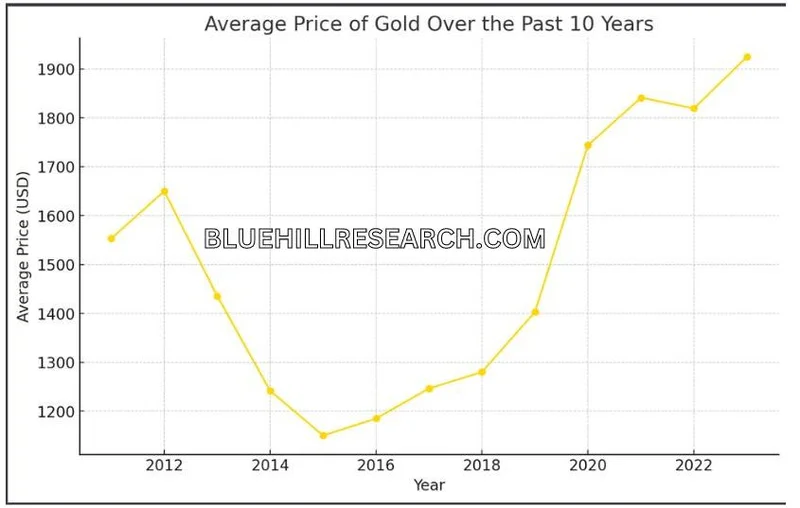So, you saw the price of gold hit a bazillion dollars an ounce and thought, "This is it. This is my moment." You pictured yourself, a modern-day prospector, swapping your worthless paper dollars for glorious, glistening bullion. You probably even watched a few YouTube videos, nodding along as some guy in a poorly-lit basement explained how you—yes, you—could beat the system.
Look at you now. Standing in a line that snakes around the block in Sydney or Melbourne, waiting to trade your cash for a metal that does... what, exactly? It sits there. It looks pretty. It doesn't pay dividends, it doesn't build anything, and its value is based entirely on the collective agreement that it's valuable. It’s the original cryptocurrency, just a lot heavier.
Let's be brutally honest. When you see everyday people, the "universal investors" as the pros call them—a term so condescending I actually admire it—piling into an asset, it's not a sign of a healthy market. It's the dinner bell ringing for the sharks. These newcomers are called "tourists" for a reason: they're just visiting. They're here for the hype, they'll get fleeced on the fees, and they'll be gone after the first real scare, leaving their money behind for the locals to pick up.
The numbers are intoxicating, I get it. Gold shot up from around $2,700 to over $4,300 in a year. That’s a monster run. Your 401(k) sure as hell didn't do that. The problem is, you're seeing the final score, not the game itself. You're showing up for the last two minutes of the fourth quarter, thinking you're the star quarterback.
This whole spectacle is a masterclass in FOMO. Fear Of Missing Out. It's a primal human emotion that Wall Street has weaponized for centuries. They pump the narrative—"economic uncertainty," "inflation hedge," "safe haven"—and watch as the herd stampedes. The financial advisors, like James Taska, talk about how "easy" it is to rebalance a portfolio with a gold ETF. Offcourse it's easy. It’s easy for them. They're just clicking a button and collecting a fee while you're sweating in line to buy a coin at a massive premium.
Where do these people even come from? One minute they're crypto evangelists promising a decentralized utopia, the next they're precious metals hoarders convinced the apocalypse is nigh. Is there a newsletter I'm missing? It feels like every few years, a new generation discovers an "unbeatable" asset class that has somehow been overlooked by the global financial elite. And every time, it ends the same way.

The market for gold is like a high-stakes game of musical chairs being played on a luxury yacht. The music is a mix of inflation fears and geopolitical chaos, and the chairs are made of solid gold. As long as the music plays, everyone is dancing, high-fiving, and feeling like a genius. But the professionals, the bankers at Standard Chartered and ICBC, they have their hands on the stereo. They know exactly when the music is about to stop. The "tourists"? They're the ones left standing, looking confused, as the yacht sails away.
And boy, did the music stop. One minute, gold is kissing a record high of $4,381. The next, it's in freefall, plunging 8.6% to just over $4,000. That’s its steepest crash since 2013. For an asset that's sold to you as "stable" and "safe," that's a hell of a nosedive. It was the largest single-day loss since August 2020. Your "inflation hedge" suddenly looks a lot like a speculative tech stock. Gold Bounces from Worst Crash Since 2013 After 'Tourists' Flood In.
The pros have a clinical, bloodless language for this. They call it "technical selling." Suki Cooper at Standard Chartered says the market was "overbought" and hadn't "had a chance to test its floor." This is a bad explanation. No, 'bad' doesn't cover it—this is a five-alarm dumpster fire of corporate-speak. Translation: "The price got stupidly high because a flood of amateurs bought the top, so we sold our positions to them and took our profits. Thanks for playing."
While retail investors were panic-selling or, even worse, "buying the dip," the data tells the real story. Trading volumes on the COMEX futures market exploded to levels not seen since the COVID crash of March 2020. The giant gold ETF, GLD, saw its steepest one-day outflow in months. The smart money wasn't buying; it was running for the exits. They created the hype, rode the wave up, and then pulled the rug out.
And now you're left holding a piece of metal, wondering what happened. The financial news will tell you it "bounced" and "found support," using technical charts with more lines than a Jackson Pollock painting to make it seem like a science. Gold Short-term Outlook: XAU/USD Crash Faces First Test of Support. But it ain't science. It's psychology. It's the calculated exploitation of human greed and fear.
Then again, with the US government perpetually shut down and new sanctions being thrown around like confetti, maybe I'm the idiot. Maybe having a few gold coins buried in the backyard is the only sane move left. But even if it is, the way this market operates feels designed to punish the exact people it claims to protect. They sell you a lifeboat, but they keep the oars for themselves. And honestly...
Let's cut the crap. You weren't investing. You were gambling. You weren't hedging against inflation; you were chasing a number on a screen. The people who sold you that gold—whether it was a coin shop, an ETF manager, or a futures broker—don't care about your financial security. They care about the "spread," the difference between what you pay and what it's actually worth. They make their money on the churn, on the panic, on your FOMO. You are the product. You are the punchline. This whole circus isn't about protecting your wealth; it's about transferring it from your pocket to theirs. Welcome to the market. Don't say I didn't warn you.